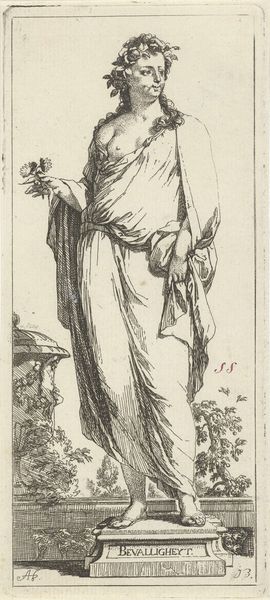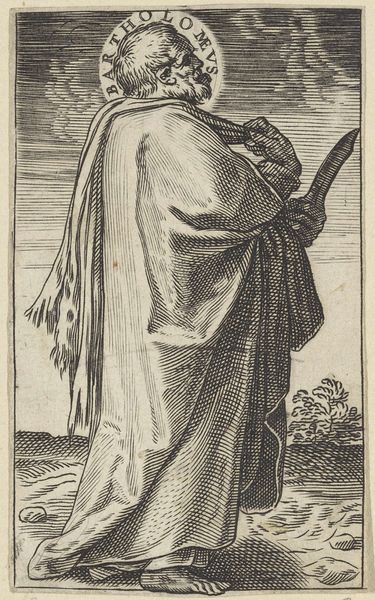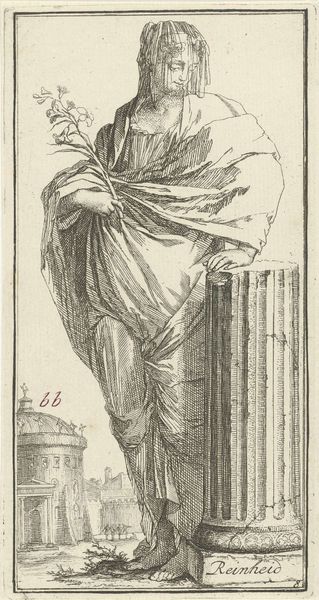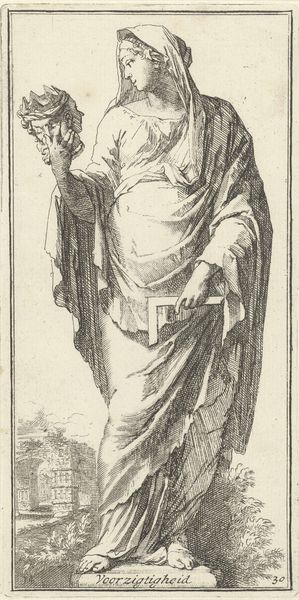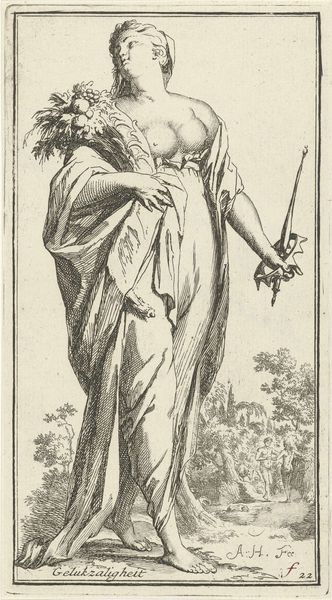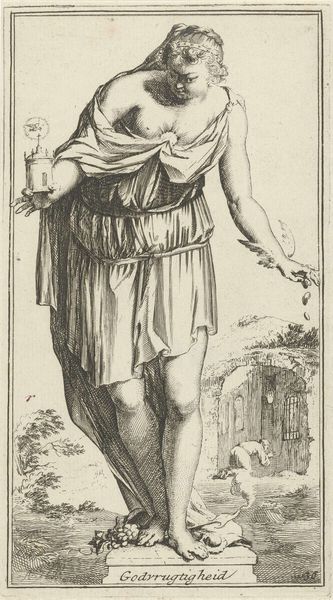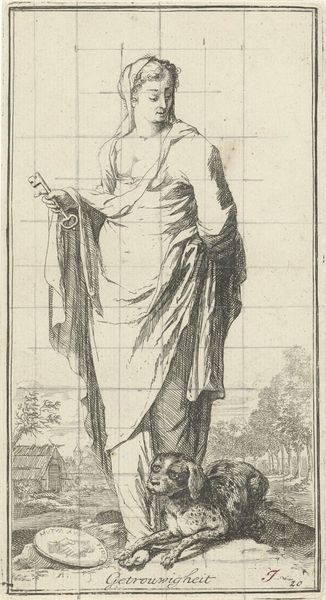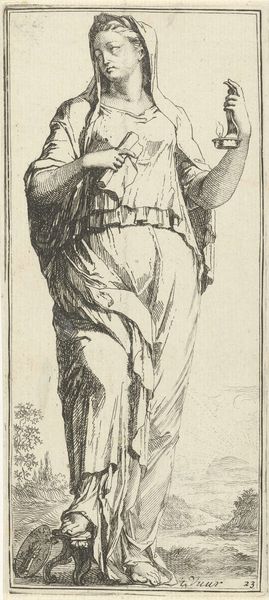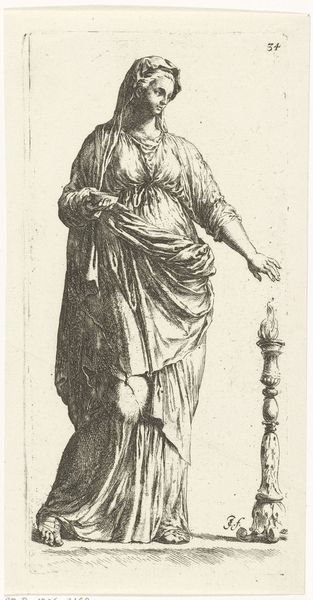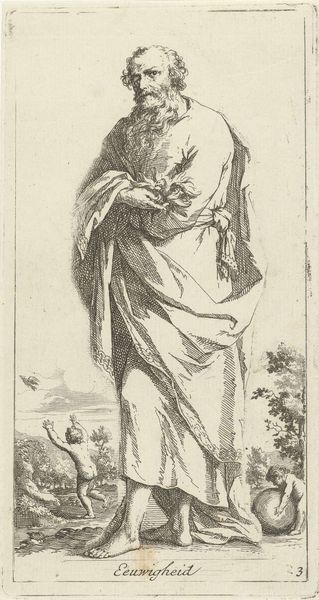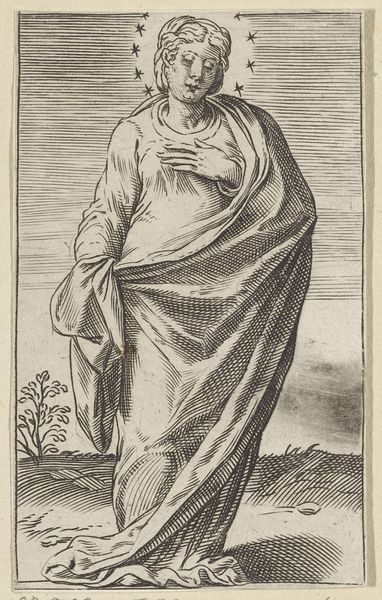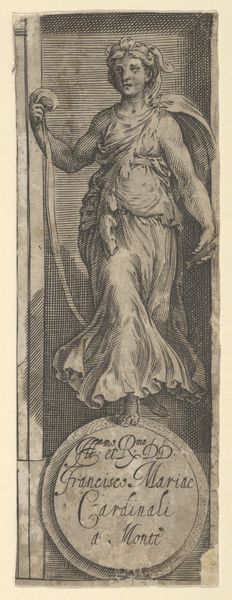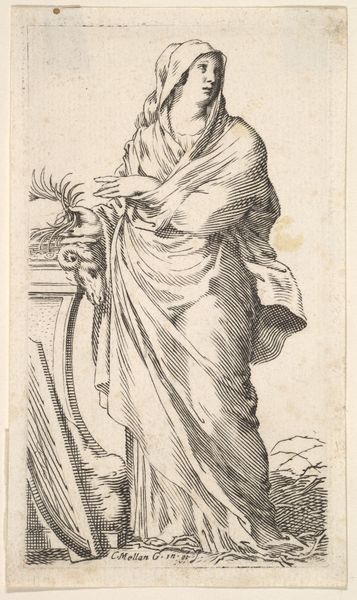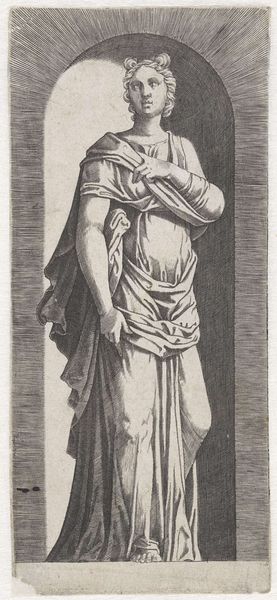
print, engraving
#
portrait
#
baroque
# print
#
pen sketch
#
figuration
#
line
#
pen work
#
history-painting
#
engraving
Dimensions: height 178 mm, width 88 mm
Copyright: Rijks Museum: Open Domain
Curator: Before us we have "Personification of Satisfaction", a print made by Arnold Houbraken in the 1710s. Editor: Well, "satisfaction" isn’t the first word that comes to mind. The linear quality of the engraving and the rather pensive gaze give it a melancholic air. It almost feels like a critique of vanity rather than its celebration. Curator: Interesting observation. From a purely formal perspective, consider the figure's placement within the frame. The figure is dominant, nearly monumental, taking up the entire vertical space and thereby creating a visual hierarchy. She holds a mirror aloft. Editor: That mirror, and the flowing robe, do they imply a certain vanity? There’s a definite contrast between the rough, etched lines that define her figure and the smoother, more idealized depiction of the small figures in the landscape below. It really foregrounds the labour behind its creation. I wonder, where was this print made and who might have purchased it? What was the distribution? Curator: Those are interesting contextual details to consider. But notice how the lines converge to direct the gaze upward towards her face and then down along the length of her draped body. It's a carefully constructed visual path meant to draw us into contemplation. The mirror as a central point, reflects the artist's interpretation of what truly provides "Satisfaction," that the viewer might learn and understand, by his line work, the essence of satisfaction. Editor: That bottom section of the engraving showing ordinary life reminds me that producing art then wasn't cheap. Houbraken, while an accomplished artist in his time, probably relied on commissioned work to pay the bills, using the engraving technique to provide more common appeal than through painting, allowing him to appeal to a different market with cheaper materials. Curator: Regardless, it provides a sophisticated framework. As the eye traces the various textures, lights and shadows emerge to add tonal gradations as we witness a baroque vision of form. Editor: And to appreciate what this tells us of labour relations and distribution methods within the 18th century artworld and how they relate to shifts in notions of wealth creation! Thanks for the conversation! Curator: Indeed! The lines offer an entire framework for the gaze.
Comments
No comments
Be the first to comment and join the conversation on the ultimate creative platform.
